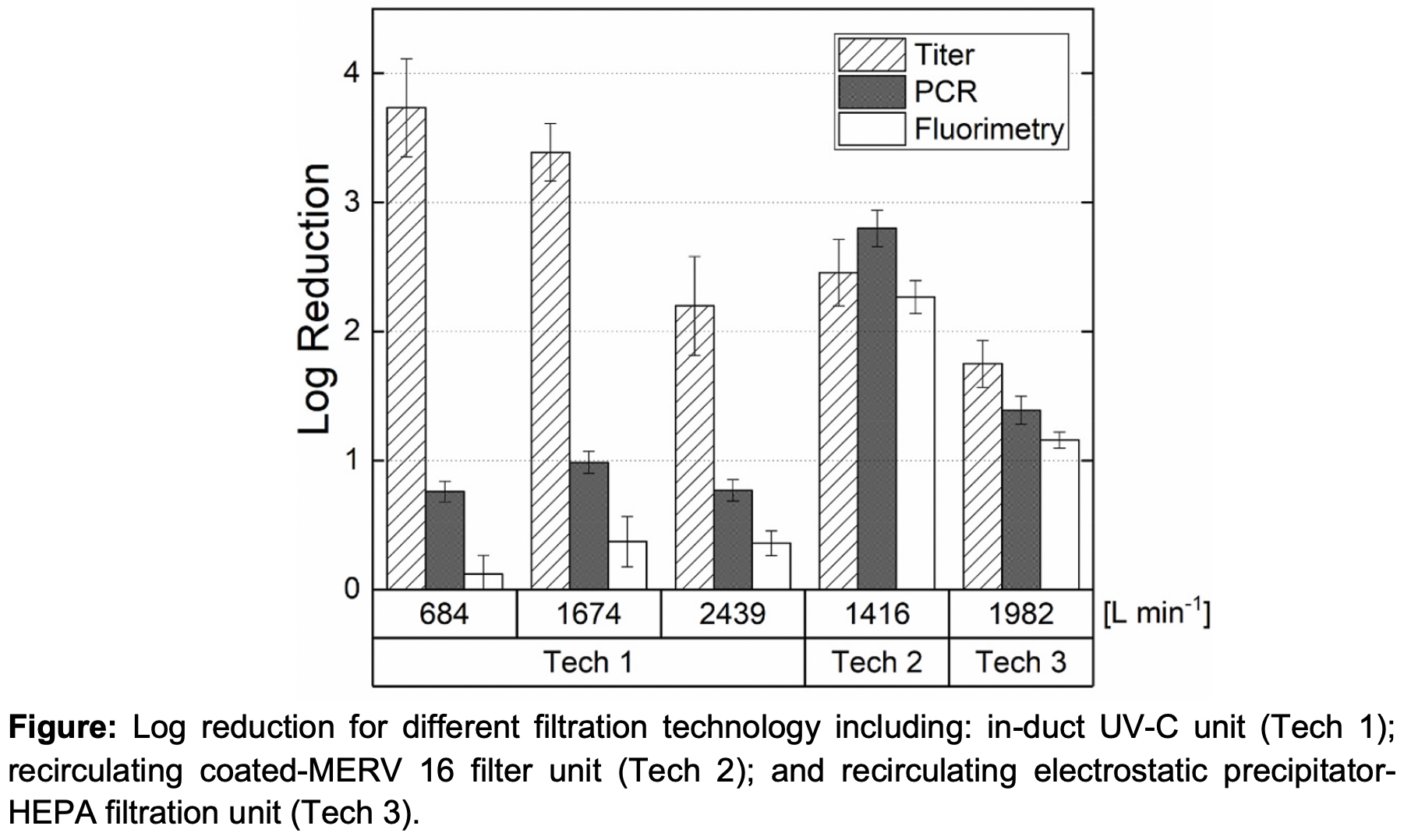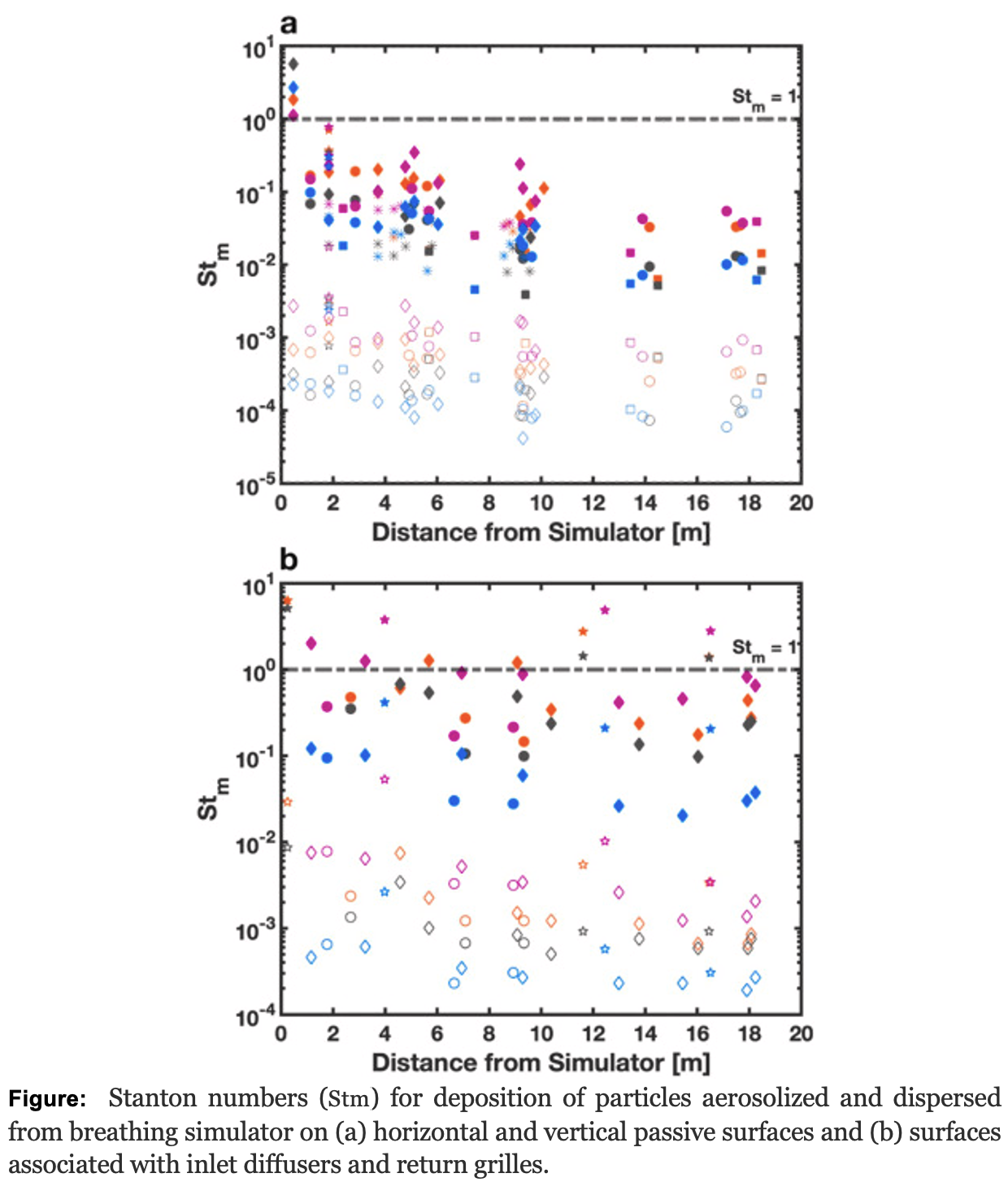Exhalation of infectious micrometer-sized particles has been strongly implicated in respiratory infection spread. Important fundamental questions are (1) the fate of infectious exhaled particles in indoor spaces, i.e., whether they will remain suspended in an aerosol until ventilation leads to their clearance or whether they will deposit, and if so, on what surfaces in an indoor space, and (2) how effective are in-duct and recirculating control technologies in reducing infectious aerosol concentrations? We perform studies investigating aerosol based infection spread and the efficacy of control technologies designed to reduce infectious aerosol concentrations.
As part of these efforts, we have developed approaches to examine the efficacy of in-duct and recirculating control technologies in removing and inactivating bioaerosols, using a single-pass wind tunnel compared (Qiao, et al., 2020; Qiao, et al, 2021). Sample log-reduction data in terms of virus aerosol titer, RT-qPCR and fluorescent tracer for three tested control technologies with a porcine coronavirus are shown below. (Ouyang et al., 2022).

In collaboration with Well Living Lab (Rochester, MN), we have also developed approach to examine ventilation and deposition of simulated exhaled particles in indoor settings. Specifically, deposition velocity (mass transfer coefficients) are investigated using a breathing simulator with an anatomically correct inhalation and exhalation waveform in an office space setting. The breathing simulator exhales fluorescent tagged particles of sizes between 1-3 um by volume. Sample results, shown below, parameterize the mass transfer coefficient to surfaces (in terms of Stanton numbers and Dahmkoler numbers) for particles as a function of distance from the breathing simulator.


References:
Eilts, S M., Li L., Pope Z. C., & Hogan C. J. (2021) Characterization of Exhaled Particle Deposition and Ventilation in an Indoor Setting. Atmospheric Environment. 262: 118602. 10.1016/j.atmosenv.2021.118602.
Qiao, Y., Yang, M., Marabella, I. A., McGee, D. A., Aboubakr, H., Goyal, S., ... & Torremorell, M. (2020). Greater than 3-log reduction in viable coronavirus aerosol concentration in ducted ultraviolet-C (UV–C) systems. Environmental science & technology, 55(7), 4174-4182.
Qiao, Y., Yang, M., Marabella, I. A., McGee, D. A., Olson, B. A., Torremorell, M., & Hogan Jr, C. J. (2021). Wind tunnel‐based testing of a photoelectrochemical oxidative filter‐based air purification unit in coronavirus and influenza aerosol removal and inactivation. Indoor air, 31(6), 2058-2069.
Ouyang, H., Qiao, Y., Yang, M., Marabella, I. A., Hogan Jr, C. J., Torremorell, M., & Olson, B. A. (2022). Single pass wind tunnel testing for recirculating virus aerosol control technologies. Journal of Aerosol Science, 106045.